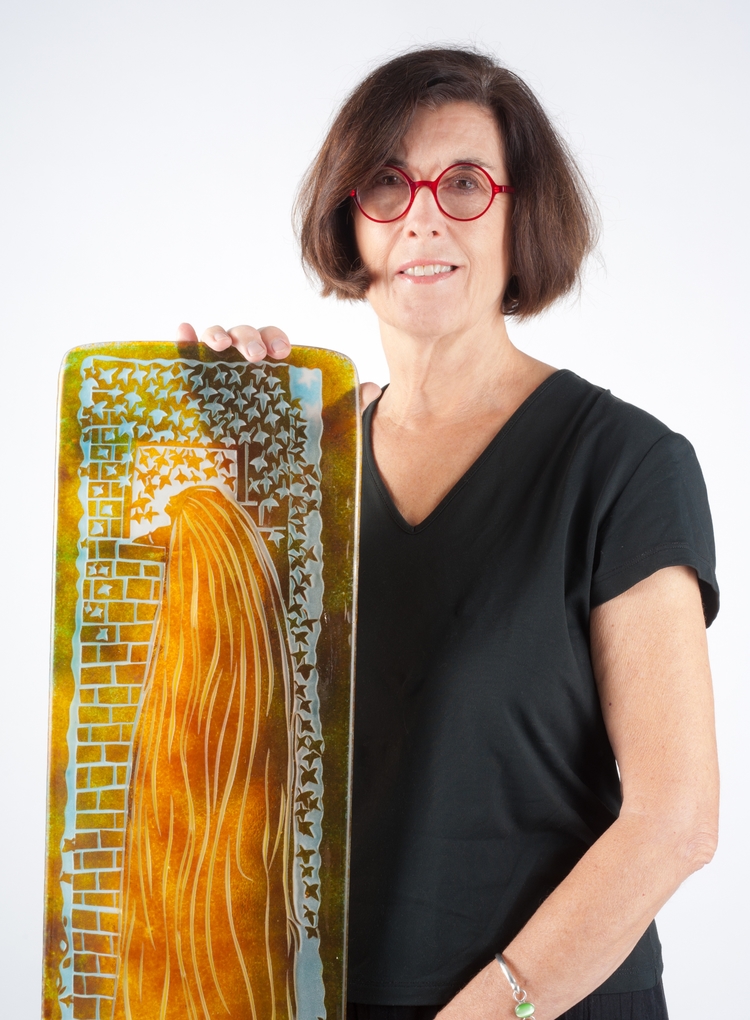
In about 2001 a friend said, "Have you ever thought of using glass for your images?" I hadn't. Don't know why that question resonated so deeply but within a few weeks I was finding ways to use stencils and sandblasting for this demanding material. Glass was so seductive. It gave me tactility, luminosity, transparency, fragility and vulnerability and dimension. Glass became my medium of choice from that point to the present.
The first pieces were direct interpretations of prints I'd made during decades of working with screen-printing, linocuts and etching. Working in ways similar to my those I'd used in printmaking, self adhesive stencil material was cut to define shapes and act as the resist for sandblasting clear glass panels.
Sandblasting gave me different depths and tonal variation. But glass required me to be even more graphic than I'd been with my prints. That means I simplified and exaggerated more. Gradually color became an added element. Every new technique generated conceptual changes too. The craft and the concept were always intertwined.
The twists, turns and evolutions of ideas and means are why it's so fascinating to make things. Over and over something new has come from a few words from someone who's watching or from noticing a new product or process that becomes available. It's opportunism at its best.
The subject matter went from personal narratives to interpretations of fables and old stories which often used animals as stand ins for people.
I kept imagining the glass animals that peopled my stories moving across wider swathes of wall space; going about their people-like business in a light-hearted way. By kiln forming larger shapes and cutting away the excess glass each figure could become free floating thanks to the discovery of a wall mounting system that was pretty much invisible and allowed compositional flexibility and some depth. The figures could now appear to float a little off the wall.
Texture and color were advanced by developing background panels made of loosely woven thread and appliqué. The sewn panels added to the narrative and also gave a contrasting fragility to the glass shapes that hovered above it. Now it was possible to make larger pieces without the complication of weight.
All technical steps would mean nothing to me if at the end I could not communicate a sense of thoughtful joy that feeds off absurd and fascinating situations swirling around us everyday. That's what fables, songs and stories are about. They address the human condition with humor, invention and exaggeration.
Interpreting a fable through glass means that the very medium holds metaphors relating to the conditions of life. The stuff can take so many forms. It holds light, it breaks, it's strong, it's delicate, it's entrancing, expressive, it's not easy to make it the way I want it to be.
That's why I work with glass.
Interested in how my work all began? Read a great blog article by Scott Ponemone here!